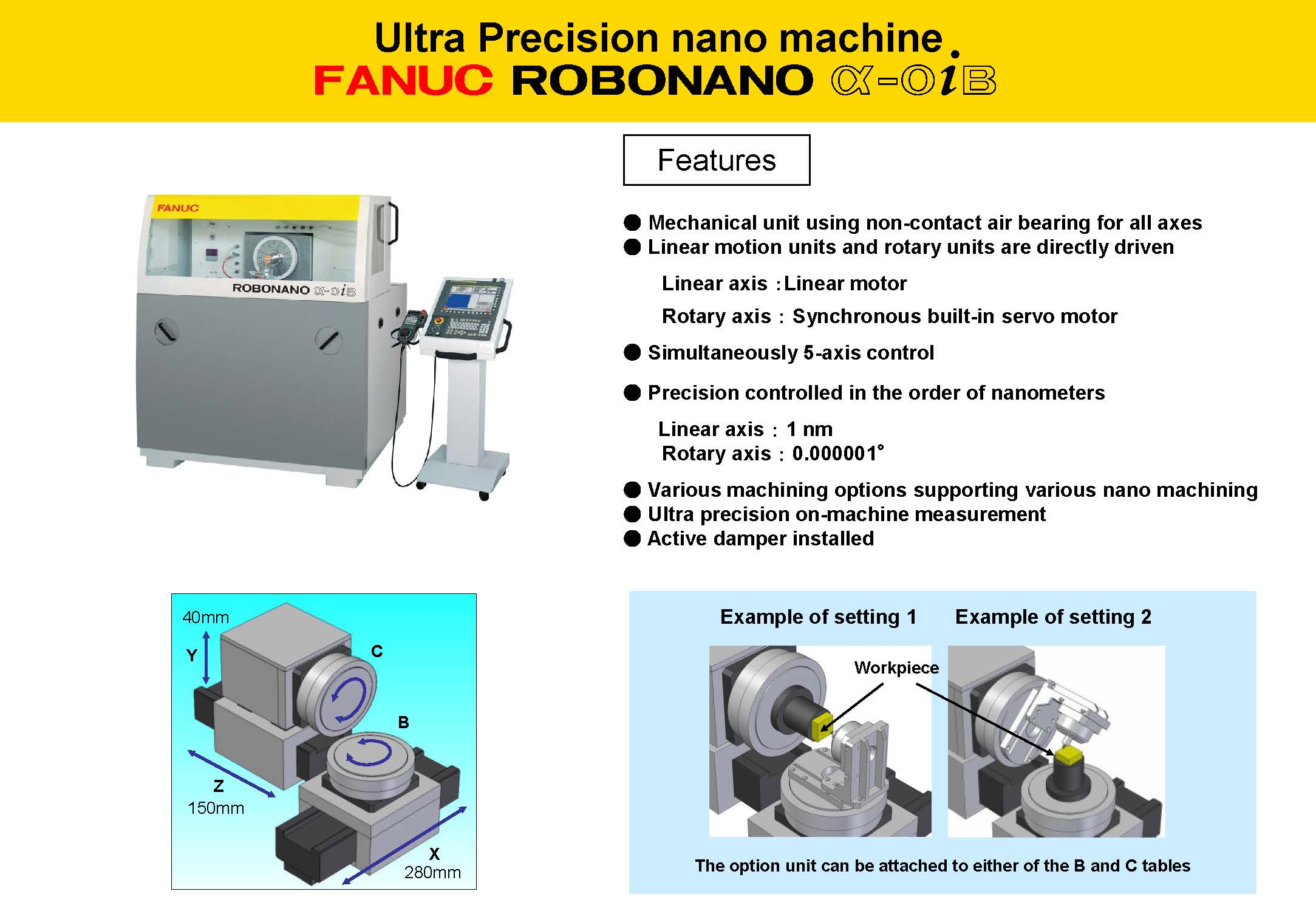Very precise machining
Dr. Neil Canter, Contributing Editor | TLT Tech Beat December 2016
A new CNC machine is now being used in the U.S. for research purposes.
KEY CONCEPTS
•
A CNC machine is evaluating new materials with nanometer precision.
•
Air bearings enable precision to be two orders of magnitude lower than any other CNC machine.
•
The ROBONANO has the ability to run the main types of metal-removal operations.
METALWORKING IS CONTINUING TO EVOLVE TO WHERE end-users are demanding that machining parts become more precise. Tighter tolerances are required because machinery technology is becoming more complex.
A previous TLT article discussed another technique known as photochemical machining (PCM) that is used in producing precision metal parts (
1). In PCM, a specific design is created on a piece of Mylar mass that is then transferred onto a specific metal substrate. Etching is done to remove unwanted metal. One limitation of PCM is that it can only be done on parts with a thickness of one millimeter.
Computer Numerical Control (CNC) machine tools are used for high-speed manufacturing where metal parts need to be produced at a rapid rate and still must meet tight tolerances. Sangkee Min, assistant professor in the department of mechanical engineering and the Grainger Institute for Engineering at the University of Wisconsin in Madison, Wis., says, “Precision for metal parts produced in this fashion is approximately 0.1 micron. This is satisfactory for today’s demanding manufacturing environment, but there is room for improvement because more precise machining may allow for the use of other materials such as synthetic sapphire that cannot be used to their fullest potential.”
Synthetic sapphire is produced from heating aluminum oxide to extremely high temperatures. The manufacturing process is difficult to scale up because synthetic sapphire is very brittle and difficult to handle.
If a CNC machine can be developed that is even more precise, then there is the potential to work with materials such as synthetic sapphire. Such a machine has been available in Japan for the past 15 years and is now being used for research purposes in Min’s laboratory.
FRICTIONLESS BEARINGS
Min now has the opportunity to do advanced machining research with nanometer precision using a new CNC machine known as the ROBONANO produced by the Japanese robotics manufacturer FANUC. He says, “We are very pleased to have the opportunity for a multi-year period to use this unique CNC machine to develop advanced machining techniques that can enable materials such as synthetic sapphire to be used. Our initial work with synthetic sapphire in Japan showed that the material is more pliable at the nanolevel and might prove to be a shatter-proof alternative to glass for use as screens in devices such as smartphones and tablets.”
Min indicates that the ROBONANO is essentially a CNC machine with the same type of controller and operating capability. He says, “The big difference is air bearings are used to control the operation of the tables enabling precision to be two orders of magnitude lower than any other CNC machine.”
Air bearings float on a cushion of air enabling the ROBONANO to operate without causing any friction. Min says, “Any friction present in this kind of machine tool will cause problems with the linear motion system control adversely affecting the precision.”
Air bearings also do not need lubrication, so this CNC machine has no requirement for lubricants such as slideway oils that are needed in typical CNC machines. Min says, “The command resolution for the x, y and z linear axes is one nanometer and the command resolution for the two rotary axes b and c is one microdegree.”
An image of the ROBONANO and its features are shown in Figure 3. Measurement of the workpiece can be done on the machine using a device known as the NANOCHECKER. Min says, “This tool is very effective at setting up work coordinates to properly machine the part to nanometer specifications.”
 Figure 3. The features of the ROBONANO CNC machine that can perform with nanometer precision are shown. (Figure courtesy of the University of Wisconsin.)
Figure 3. The features of the ROBONANO CNC machine that can perform with nanometer precision are shown. (Figure courtesy of the University of Wisconsin.)
The main types of metal-removal operations that are used on any other CNC machine can be run on the ROBONANO. This includes drilling, grinding, milling, scribing, tapping and turning.
Min says, “The ROBONANO also has the flexibility to use different types of machining techniques. Conventional flood machining can be done along with minimum quantity lubrication and dry machining.” The four types of metalworking fluids (straight oils, emulsifiable oils, semisynthetic fluids and synthetic fluids) can be used with the ROBONANO according to Min.
Min indicates that the durability of the ROBONANO is good as long as it is properly maintained. He says, “This CNC machine has been used without any drop-off in precision in Japan since it was developed.”
Min is excited to work with the ROBONANO in a number of applications. Besides working with synthetic sapphire, he intends to machine silicon in thin film optics and has a project to develop a special pattern for a watch company.
Min indicates that any metal can be fabricated on the ROBONANO. He believes that a lot of research will be devoted to machining emerging materials with very challenging features and tolerances.
Additional information can be found in the following link to a press release from the University of Wisconsin’s Website:
www.engr.wisc.edu/advanced-nano-cutter-boost-emerging-materials-research-uw-madison/ or by contacting Min at
sangkee.min@wisc.edu.
REFERENCE
1.
Canter, N. (2013), “Photochemical machining,” TLT,
69 (3), pp. 12-13.
 Neil Canter heads his own consulting company, Chemical Solutions, in Willow Grove, Pa. Ideas for Tech Beat items can be sent to him at neilcanter@comcast.net
Neil Canter heads his own consulting company, Chemical Solutions, in Willow Grove, Pa. Ideas for Tech Beat items can be sent to him at neilcanter@comcast.net.